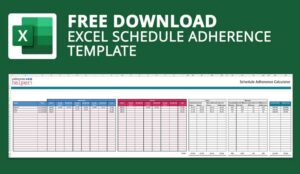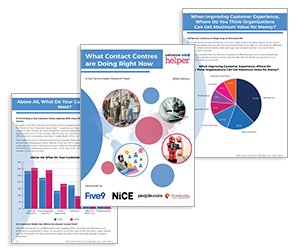Schedule efficiency plays a crucial role in the smooth running of a contact centre.
When staffing levels don’t align with demand, it can lead to longer wait times, higher costs, and increased agent stress.
To find out more, we asked Richard Saqladi, Regional Sales Director at InVision Group (peopleware – formerly injixo), to explain why it’s essential to continuously monitor and refine your approach.
Video: Constantly Monitor and Improve Your Schedule Efficiency
Watch the video below to hear Richard explain why you need to constantly monitor and improve your schedule efficiency:
With thanks to Richard Saqladi, Regional Sales Director at InVision Group (peopleware – formerly injixo)), for contributing to this video.
This video was originally published in our article ‘Is Your Scheduling in Need of an Overhaul? Try These 8 Top Tips’
What Schedule Efficiency Means
Schedule efficiency measures how closely your staffing levels match the actual number of agents needed to handle contact volume, as Richard explains:
“Schedule efficiency measures how accurately, and consistently, the number of scheduled employees matches the required staffing.”
Even small mismatches – whether over- or under-scheduling – can have a significant impact on operations and morale.
Why It Should Be a Priority
Poor schedule efficiency can result in three common challenges:
- A subpar customer experience due to long response times
- Burnt-out agents dealing with unpredictable workloads
- Wasted resources from overstaffing during quiet periods
Striving for better alignment helps avoid these issues and improves overall performance.
“Bad schedule efficiency indicates poor customer experience, agent burnout, excessive cost, or all three.”
How to Track and Use the Metric
To manage this effectively, monitor the variance between scheduled and required staffing levels throughout the day, ideally in 15- or 30-minute intervals.
Collect and summarize this data weekly or monthly to spot patterns and identify where your forecasts or scheduling may need adjustment.
“You should measure the discrepancies between the scheduled and required figures, at maybe 15 -or 30-minute intervals, and summarize them on a weekly or monthly basis. This approach, and this metric, is possibly one of the most important in the planning process.”
Realistic Expectations and Continuous Improvement
You’re unlikely to ever reach perfect schedule efficiency, as 100% is not a practical goal. However, the key is to use the data to make gradual improvements, as Richard continues:
“In reality, you’ll never reach 100%, but it’s vital to measure this KPI and constantly strive to improve it.”
Small, regular adjustments to shift planning and forecasting can add up to better alignment and more consistent service levels over time.
If you are looking for more great insights from the experts, check out these next:
- 3 Ways AI Can Empower Agents and Reduce Stress
- A Fresh Look at Workforce Management Trends
- Four Steps to Streamline Scheduling
- Tips to Use QA to Fix Broken Processes
Author: Robyn Coppell
Reviewed by: Xander Freeman
Published On: 19th Jun 2025 - Last modified: 25th Sep 2025
Read more about - Video, Key Performance Indicators (KPIs), Peopleware, Richard Saqladi, Scheduling, Videos, Workforce Management (WFM)
















